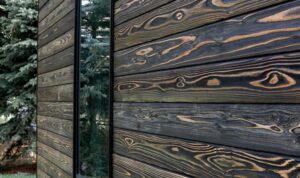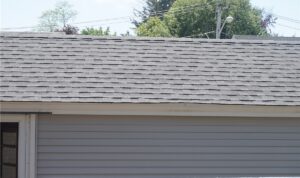Exploring the cost of siding and installation opens the door to a world of considerations and decisions. From choosing the right materials to understanding installation factors, this topic delves into the intricacies of home improvement with a focus on budget and quality.
As we navigate through the details of siding and installation costs, readers will gain valuable insights into making informed choices for their renovation projects.
Cost of Siding Materials
When considering the cost of siding materials, it's essential to understand the various options available and how they can impact your overall budget. Here, we will explore common siding materials and their average costs per square foot, as well as how the quality of siding materials can affect the overall cost.
Comparison of Siding Materials
- Vinyl Siding:Vinyl siding is one of the most affordable options, with an average cost of $2 to $7 per square foot. It is low maintenance and comes in a variety of colors and styles.
- Wood Siding:Wood siding is a popular choice for its natural aesthetic appeal, but it tends to be more expensive, ranging from $5 to $10 per square foot. It requires regular maintenance to prevent rot and pests.
- Fiber Cement Siding:Fiber cement siding is a durable option that can mimic the look of wood or stucco. It typically costs between $5 to $12 per square foot, making it a mid-range option in terms of cost.
- Metal Siding:Metal siding is known for its longevity and resistance to fire and pests. It can cost anywhere from $4 to $10 per square foot, depending on the type of metal used.
Installation Cost Factors
When it comes to the cost of siding installation, several factors come into play that can influence the overall expenses. Factors such as the size and complexity of the project, as well as the labor costs involved, all play a significant role in determining the final cost.
Size and Complexity of Project
The size and complexity of the project are major factors that can impact the cost of siding installation. Larger projects with more square footage will naturally require more materials and labor, leading to higher overall costs. Additionally, projects with intricate designs or unique features may require more time and skill to complete, further adding to the installation expenses.
Labor Costs
Labor costs also play a crucial role in determining the overall installation expenses. Skilled labor is essential for a successful siding installation, and experienced professionals may charge higher rates for their expertise. Additionally, factors such as the location of the project, labor market conditions, and the timeline for completion can all influence labor costs.
It's important to consider labor expenses when budgeting for a siding installation project to ensure a high-quality outcome.
Additional Expenses
When budgeting for siding installation, it's crucial to consider potential additional expenses that may arise beyond the cost of materials and labor. These extra costs can impact the overall budget significantly, so being aware of them is essential.
Permits and Regulations
Securing permits for siding installation is a necessary step in many areas. Permit costs can vary depending on your location and the scope of the project. Failure to obtain the required permits can result in fines or even having to remove the siding, leading to additional expenses and delays.
It's important to factor in permit costs when budgeting for your siding project.
Unexpected Repairs or Modifications
During the siding installation process, unexpected repairs or modifications may be needed. For example, if underlying issues are discovered while removing the old siding, such as rot or mold, these will need to be addressed before the new siding can be installed.
These unforeseen repairs can add to the total cost of the project and should be taken into consideration when planning your budget.
Cost-Saving Tips
When it comes to saving money on siding and installation costs, there are a few strategies that can help you stay within budget without compromising on quality. From considering DIY options to negotiating prices with contractors, here are some tips to help you save on your siding project.
Consider DIY Options
If you have some DIY skills and are willing to put in the time and effort, opting to do the siding installation yourself can lead to significant cost savings. Keep in mind that this option is best for those who have experience with similar projects and access to the necessary tools.
Negotiate Prices with Contractors
Don't be afraid to negotiate prices with contractors to get the best deal possible. Obtain multiple quotes from different contractors and compare their offers. You can also try to negotiate a lower price based on the scope of work, materials used, or even the timing of the project.
Closure
In conclusion, the cost of siding and installation encompasses various aspects that impact the overall expenditure on home upgrades. By being aware of the factors influencing costs and implementing cost-saving strategies, homeowners can achieve a balance between affordability and quality in their renovation endeavors.
Clarifying Questions
What factors influence the cost of siding installation?
The size of the project, choice of materials, and complexity of the design can all impact the overall cost of siding installation.
Are there additional expenses to consider besides materials and labor?
Yes, permits, unexpected repairs, and modifications can contribute to the total cost of siding and installation.
How can homeowners save on siding and installation costs?
Exploring DIY options, negotiating prices with contractors, and choosing cost-effective materials are some strategies to reduce overall expenses.



